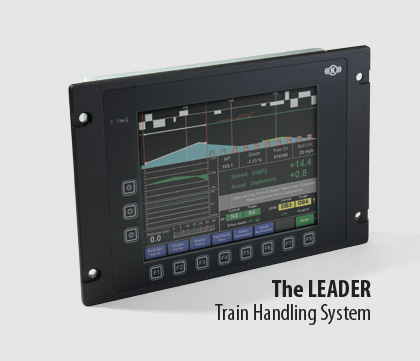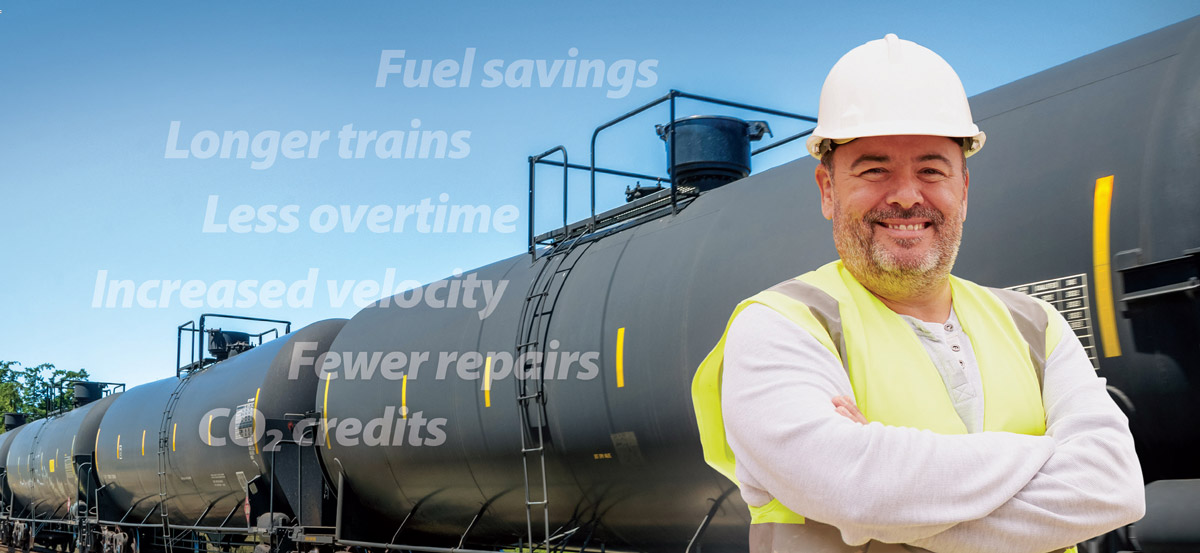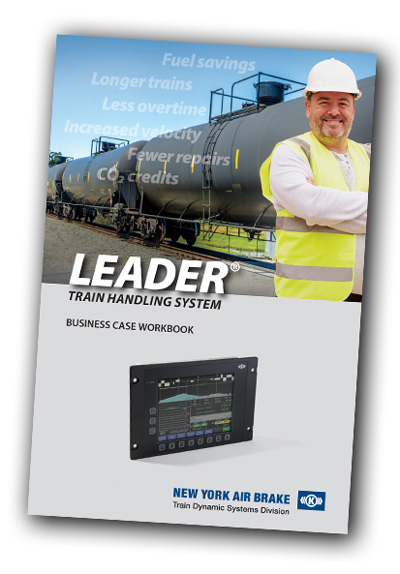HOW WILL LEADER® IMPROVE YOUR OPERATING RATIO?

Sure, the LEADER Train Handling System is unequaled at reducing locomotive fuel consumption. But LEADER’s superior control of in-train forces yields other benefits, too: Depending on how you answer the questions below – we’re confident LEADER can improve your operating ratio by as much as 1, 2 or even 5%!
 Fuel expenses account for a whopping 14.7% of Class 1 operating costs.1 Because LEADER adapts to en-route changes in real time – without ‘drop outs’ that hand locomotive control back to the engineer – what would LEADER’s fuel savings of 6% or more mean to you?
Fuel expenses account for a whopping 14.7% of Class 1 operating costs.1 Because LEADER adapts to en-route changes in real time – without ‘drop outs’ that hand locomotive control back to the engineer – what would LEADER’s fuel savings of 6% or more mean to you?
 The average train length for Class 1 railroads in North America is 71.8 cars.2 LEADER’s unique ability to reduce in-train forces allows for an increase in train length. How much more revenue could an additional 3, 5 or even 10 cars earn your railroad, especially in difficult terrain?
The average train length for Class 1 railroads in North America is 71.8 cars.2 LEADER’s unique ability to reduce in-train forces allows for an increase in train length. How much more revenue could an additional 3, 5 or even 10 cars earn your railroad, especially in difficult terrain?
 Overtime expenses add up to 1.8% of Class 1s operating expense.1 Since LEADER reduces wear and tear – and has never 'broken a train' over 1,200,000 trips and 190,000,000 miles – how many hours could LEADER save your operation in unnecessary repairs and delays?
Overtime expenses add up to 1.8% of Class 1s operating expense.1 Since LEADER reduces wear and tear – and has never 'broken a train' over 1,200,000 trips and 190,000,000 miles – how many hours could LEADER save your operation in unnecessary repairs and delays?
 In 2015, railroads replaced 717,320 end-of-car components.3 Given that LEADER reduces in-train forces, extends equipment life, and protects against lading damage – how much would LEADER save you in repaired or replaced knuckles, draft gear, yokes, and other components?
In 2015, railroads replaced 717,320 end-of-car components.3 Given that LEADER reduces in-train forces, extends equipment life, and protects against lading damage – how much would LEADER save you in repaired or replaced knuckles, draft gear, yokes, and other components?
 Finally, equipping your fleet with LEADER helps improve customer satisfaction through increased throughput and on-time arrivals. And you'll earn EPA credits from your locomotive manufacturer worth more than the cost of deploying LEADER!
Finally, equipping your fleet with LEADER helps improve customer satisfaction through increased throughput and on-time arrivals. And you'll earn EPA credits from your locomotive manufacturer worth more than the cost of deploying LEADER!
Let's do the math and develop the business case together for your operation: Contact Vincent Moore today at +1 315 786-5271 or Vincent.Moore@nyab.com to schedule a LEADER consultation.
1 2015 AAR Analysis of Class 1 Railroads
2 2015 AAR Railroad Facts
3 2015 AAR interchange billing


